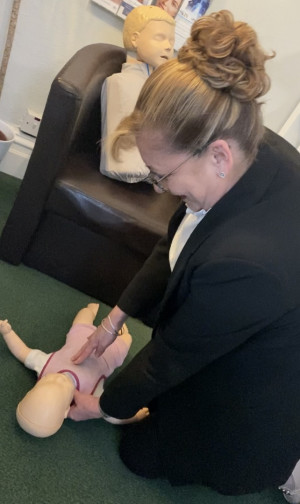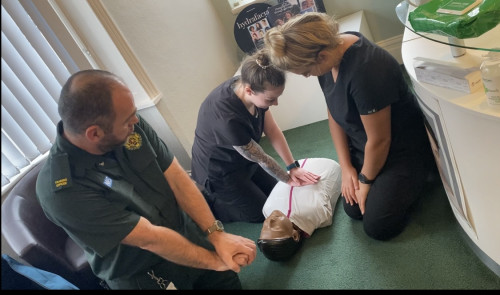How to do CPR in 5 steps (by The British Heart Foundation)
Step 1: Shake and shout
If you come across someone who is unconscious, always check for hazards before you start helping.
Someone having a cardiac arrest will either not be breathing or they won’t be breathing normally. They also won’t be conscious.
Check for a response – gently shake the person’s shoulders and ask loudly 'are you alright?'
Shout for help – if someone is nearby, ask them to stay as you might need them. If you are alone, shout loudly to attract attention, but don't leave the person.
Step 2: Call 999
If the person is not breathing or not breathing normally:
- ask someone to call 999 immediately and ask for an ambulance
- ask someone to find a defibrillator
If there's no one around call 999 before starting compressions.
Step 3: Give chest compressions
- Kneel next to the person.
- Place the heel of one hand in the centre of their chest. Place your other hand on top of the first. Interlock your fingers.
- With straight arms, use the heel of your hand to push the breastbone down firmly and smoothly, so that the chest is pressed down between 5–6 cm, and release.
- Do this at a rate of 100 to 120 chest compressions per minute – that’s around 2 per second. We tell people to think of Stayin’ Alive by the Bee Gees and push to the beat.
Step 4: Keep going
- Keep going until professional help arrives and takes over, or the person starts to show signs of regaining consciousness, such as coughing, opening their eyes, speaking, or breathing normally.
- If you’re feeling tired, and there’s someone nearby to help, ask them to take over giving CPR. You can show them what to do and take turns until emergency help arrives.
Step 5: Use a defibrillator
- As soon as a defibrillator is found turn it on and follow its clear instructions.
- The defibrillator will decide whether a shock is needed and if so, it will tell you to press the shock button. An automatic defibrillator will shock the person without prompt. Don’t touch the person while they're being shocked.
Doing CPR on a child or baby is different and it's important to know why.
See the British Heart Foundation (BHF) website for more information.
Follow this link to donate to the BHF https://www.bhf.org.uk/how-you-can-help/donate/your-donation/get-started

